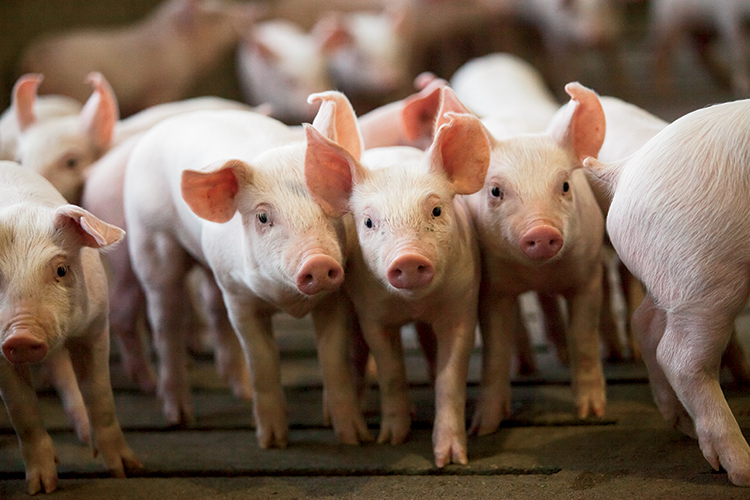Home > Ohio > Ohio Crops & Livestock > Protecting the Herd
Protecting the Herd
In partnership with: Ohio Department of Agriculture

When symptoms of Porcine Epidemic Diarrhea Virus (PEDV) hit one of the barns at Hord Livestock in Bucyrus in January 2014, Pat Hord needed a fast disease confirmation. That came from samples sent to the Ohio Department of Agriculture’s Animal Disease Diagnostic Laboratory.
“If we get the sample into the lab early in the day, we are able to get same-day results on highly sensitive tests,” says Hord, whose farm could lose many pigs from PEDV – a devastating disease, which causes intestinal illness in swine, especially young pigs. It is transmitted via feces or insects contaminated with feces. PEDV does not sicken humans or impact the safety of pork products.
Since 2013, two strains of PEDV and one strain of Swine Deltacoronavirus (SDCV) have appeared in the U.S.
Ohio Department of Agriculture (ODA) staff and scientists have played an important role nationally in detecting and understanding these viruses. Prevention of PEDV proved baffling – especially in that first year.
“These viruses are affecting some of the most biosecure farms in the country,” says Dr. Tony Forshey, ODA state veterinarian. The deadliest strain hit Hord’s farm.
Scientists led by Dr. Yan Zhang at the ODA Animal Disease Diagnostic Laboratory first genetically sequenced a second strain of PEDV in February 2014. An injectable vaccine for the virus became available in mid-2014. Dr. Forshey says the swine industry is striving for an oral vaccine. Vaccination of the sow would pass along immunization to the baby pigs through nursing.
While researchers push the development and improvement of PEDV vaccines, the ODA Animal Disease Diagnostic Laboratory tests and reports samples from infected farms in Ohio and surrounding states.

“We are one of the top six labs in the country, in terms of the number of samples tested for PEDV,” says Dr. Beverly Byrum, lab director. The lab is improving its testing ability; a $100,000 equipment investment in 2014 allows even faster and more economical test results, says Dr. Byrum. A database records results, provides 24/7 access to the data and can interface with USDA for disease monitoring.
Dr. Tony Forshey also coordinates in-person PEDV updates with Ohio swine industry practitioners.
“We have a monthly task force meeting made up of six to eight swine veterinarians, and some swine producers, from across the state,” he says. “That discussion is very important, because it seems everybody is seeing (effects of) these viruses a little bit differently.”
The task force also discusses a strain of Swine Deltacoronavirus (SDCV) that Dr. Yan Zhang’s team identified in 2014. Although less fatal than PEDV, SDCV has similar symptoms.
“It’s important for farms to know exactly what disease they are dealing with,” says Dr. Forshey.
Ohio’s swine industry contributes more than $650 million to the state economy. Effective disease management and future vaccines will help lessen farm financial risks. Future benefits exceed dollars and cents.
“Everybody on our farm – from the office to the feed mill to our animal care team and our transporters – everybody is affected when a disease seems impossible to control,” Hord says. “You’re coming out here every day to do the best job possible, and it’s extremely discouraging when there’s no hope of helping your animals.”
Timely, accurate disease research and diagnosis, by ODA scientists and their colleagues across the country, will help move hog farmers closer to hope for pigs infected with coronaviruses.



